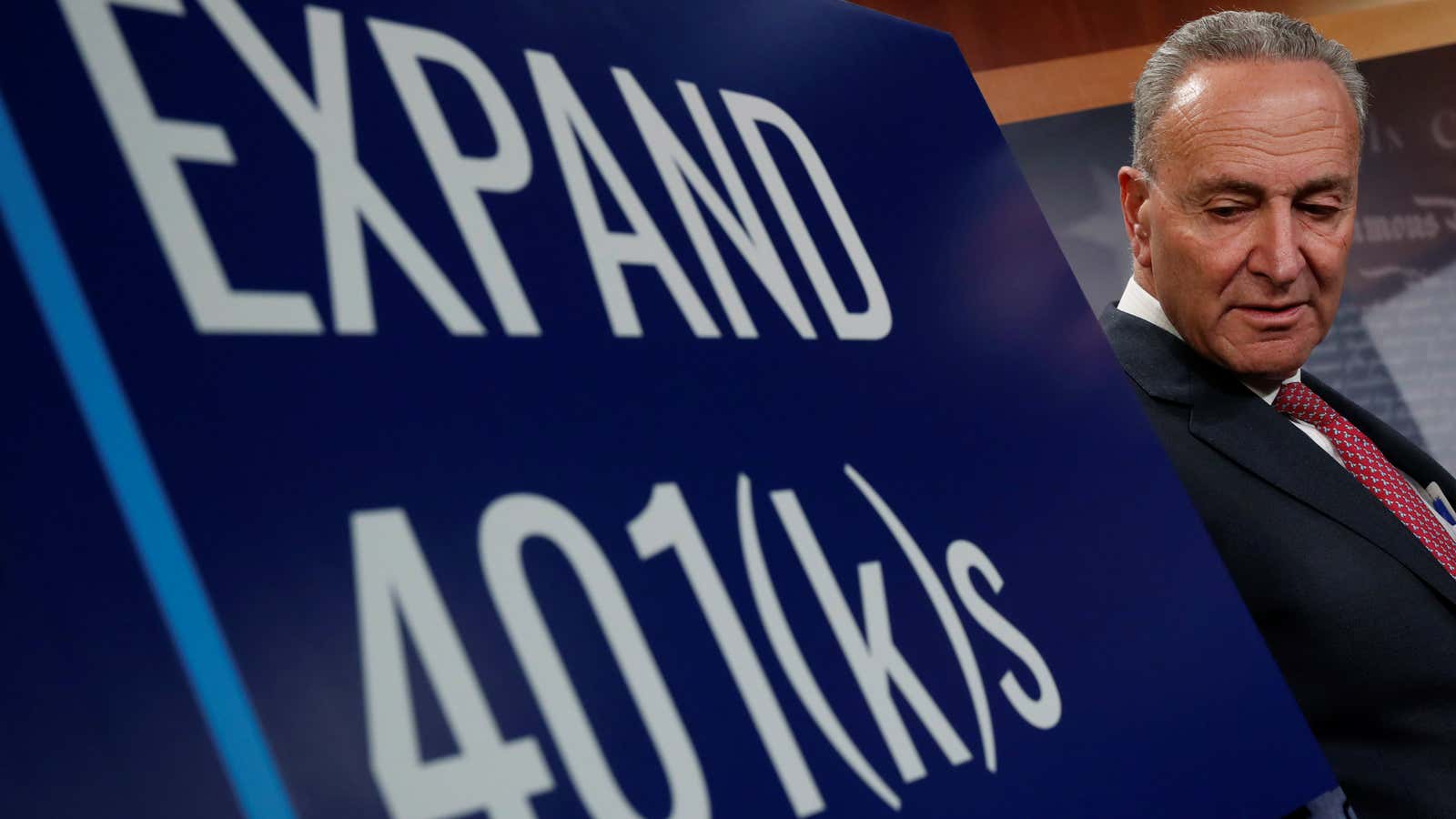The 401(k) turns 40 today (Nov. 6). What started off as a small provision in the 1978 Revenue Act to supplement defined benefit plans—its name refers to a section of the tax code—the 401(k) has defied expectations to become the primary retirement saving vehicle of many Americans. Some argue now that it’s reaching middle age, it’s time for the 401(k) to fade into obscurity. But it’s only getting started. It is the Julia Louis-Dreyfus of saving vehicles.
What is a 401(k)?
A 401(k) is a retirement savings account. It allows employees and employers to put aside wages before they are taxed and invest them in a choice of different assets. The money is then spent in retirement. There are penalties for taking funds out before age 59.5, and there are tax penalties if some money is not withdrawn after age 70.5. You must pay taxes when you take money out. Unlike a traditional defined benefits pension, there are no guarantees of how much money you’ll have for retirement: The account’s value determines the income you’ll have to live on.
Let’s set the record straight.
The 401(k) gets a bad rap. People blame it for undermining retirement security by accelerating the demise of traditional defined benefit plans, the old company pensions. But that’s unfair. The Employee Retirement Income Security Act of 1974 (ERISA) is the true culprit. It forced companies to account for the true costs of pensions and adequately fund them (rather than understate the liability on their balance sheets). Once companies had to recognize the costs of their promises, they did not want to make those promises anymore.
The 401(k), which came along a few years later in subsequent legislation, simply offered another alternative benefit when companies ditched their traditional pensions. If 401(k)s did not exist, odds are US employers would still have gotten rid of their defined benefit plans, given that many other countries ditched defined benefit plans too, even without 401(k)s. In that case workers would not have any kind of benefit. The possibility of offering a cheaper alternative means more people have retirement benefits than in the peak defined-benefit days.
Besides, defined-benefit plans weren’t so great anyhow. They’re not as valuable if you change jobs, and your benefits might be reduced if your employer goes out of business and/or doesn’t fund the plan. The cost and risks are why employers and governments in other countries are moving away from defined benefit plans too.
Some economists and policy makers argue 401(k)s are expensive for the government because they allow Americans to lower their tax bill. But these forgone tax-revenue estimates only look at revenue projections for the next 10 years. You do have to pay those taxes eventually, but 10-year budget projections don’t include this future revenue. These days deficit-happy governments don’t think much about the future. In a way 401(k)s force them to save too, by delaying current revenue for future taxes.
Still a work in progress
The 401(k) has come a long way in the last 40 years. As it evolved, policy makers have introduced improvements that are becoming standard practices. Automatically enrolling employees dramatically increases participation. Selecting low-fee index funds as the default investment option lowered costs to consumers and improved diversification. These have made 401(k)s more popular and more successful.
But problems remain. Only about 61% of Americans employees have access to a retirement benefit at work. Smaller employers are less likely to offer them because of high administrative costs and many part-time employees are not offered them at all. While it’s not clear that 100% of the population should be saving for retirement—for example, a worker earning low wages who will see a large income relative to their salary from Social Security may not need retirement savings—participation in 401(k)s should be higher. A new bill introduced in Congress this year that would make it cheaper for small employers to offer retirement accounts could increase coverage.
The other unresolved question is how retirees should spend the money in 401(k)s after they retire. We’ve figured out saving, participation, and the wisdom of using index funds, but knowing how much to spend each year and managing money after retirement is a harder problem with little margin for error. Annuities, where insurance company pays a steady income for life, are popular with economists, but no one else. It remains a problem for regulators and the retirement industry.
Finally coming into its own
Retiring Baby Boomers are the first generation to retire on a 401(k), with the first reaching age 65 in 2011. Their financial security will be the first big test of the plans’ success. Other countries have been successful combining 401(k)-like accounts with government pensions, ensuring most of their citizens receive 70% of their working income in retirement. With a few tweaks, those systems could work in America too.
